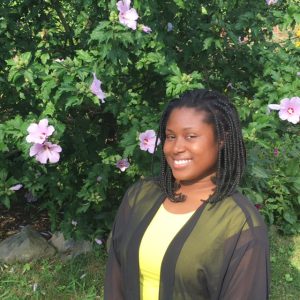This post was authored by HEFN Intern Khalila Lomax.
One hot summer Saturday, I ventured into a “grocery mart” to purchase some water, only to find that my only options were flavored water, juice, and soda. (Here’s information on “grocery marts.” ) This particular area does not have a neighborhood grocery store where people can purchase water. Others seem also to have figured out that this is a water desert; a young boy was selling bottles of water out of his cooler a few feet from the grocery mart. In contrast, a few weeks later in a more affluent neighborhood, I noticed people walking into stores and getting free cups of water. It was completely mind-boggling, that less than two miles away people could not even purchase water.
While I learned a lot this summer about many different issues, what I learned about drinking water was the most eye opening. Many people wrongfully assume the need for safe drinking water is only an issue for other countries, when in all actuality the need for safe drinking water is in our own backyards. The Flint crisis drew more attention to lead and other contaminants in drinking water. At first I was overwhelmed and deeply concerned about the state of drinking water and its future. Collectively, water accessibility also is important. Access to safe, affordable drinking water is key in having healthy and sustainable communities. Water accessibility is a human right. Yet 40% of Navajo Americans have no access to running water. To remedy this injustice, the Navajo Water Project is dedicated to providing running tap water and toilet access to over 250 Navajo American homes.
Photo Credit: TapIt Metro DC
As I’ve spent time at HEFN and in the DC area, while noticing differences in which neighborhoods have easy access to drinking water, I’ve also found examples of useful information. The Washington, DC water utility, for example, has released a detailed interactive map of lead pipes in the city. The map allows users to see problem areas, including information on public and private lead pipes and private lead pipes. I also ran across an app called TapIt Metro DC that allows users to locate free tap water refills. It consists of a regional map and GPS locations for all TapIt partner businesses and organizations in the DMV area. There’s also federal government resources, like the White House report on the future of water sustainability.
During my internship at HEFN, I learned a great deal about health and the environment, as well as about philanthropy. Fortunately, philanthropy is becoming more intersectional and diverse. For example, the D5 Coalition is dedicated to strengthening philanthropy’s inclusivity, diversity, and equity. It is challenging foundations to be a part of expanding diversity in the field. At HEFN, the goal is to mobilize philanthropy in order to find solutions for environmental health and justice problems, while building a powerful leadership base by empowering grassroots organizations and organizations led by people of color, women, low income people, and young people. HEFN is dedicated to amplifying the voices of the most vulnerable and of those most affected by environmental health injustices.
While I am still concerned because the dangers of water contamination are health threatening, and the remedies are often time consuming and expensive, I am confident in all the work that philanthropy and NGOs are doing around drinking water. This work can help make a difference by promoting power-building, inclusivity, and solutions to ensure that more people have access to clean, affordable drinking water.
[Editor’s note: Foundations and donors interested in grantmaking to improve universal access to safe drinking water are encouraged to contact hefn@hefn.org for more information, including about a funder email group and a November 14, 2016 meeting for funders on drinking water issues.]
 Khalila Lomax is HEFN’s Summer 2016 Environmental Health and Justice Intern. She holds a BS in Political Science/Criminal Justice from the University of Akron. She will begin her M.P.A program in Fall 2016 at Cleveland State University. Upon graduation, she hopes to do policy research and aid in creating more effective public policies.
Khalila Lomax is HEFN’s Summer 2016 Environmental Health and Justice Intern. She holds a BS in Political Science/Criminal Justice from the University of Akron. She will begin her M.P.A program in Fall 2016 at Cleveland State University. Upon graduation, she hopes to do policy research and aid in creating more effective public policies.

